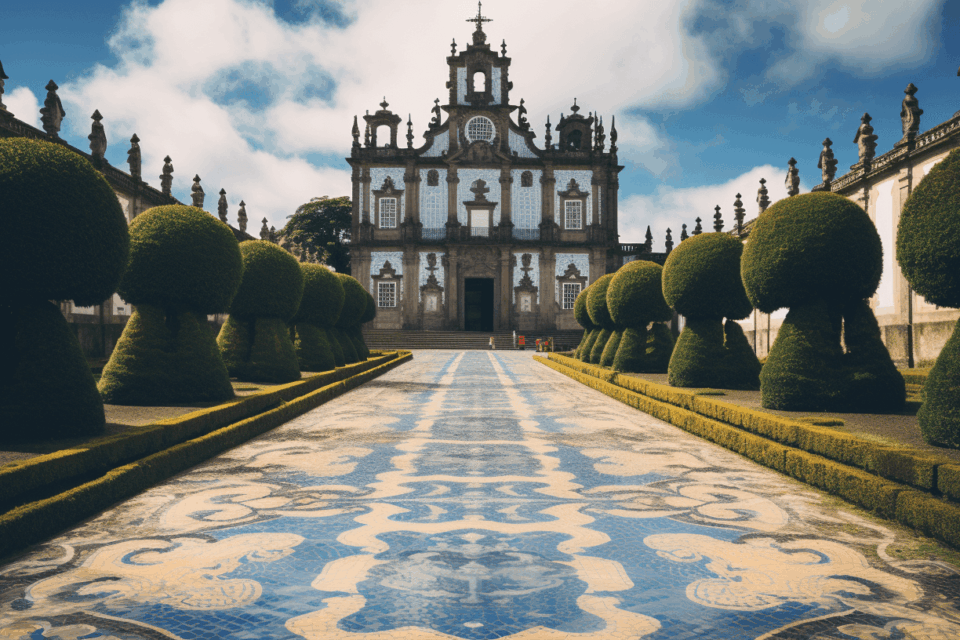Braga: History, Architecture, and Religious Sites
Tucked away in Portugal’s lush northern hills, Braga is one of the country’s oldest and most captivating cities. Often called the “Rome of Portugal” for its abundance of churches and religious heritage, Braga offers a fascinating blend of ancient history, architectural splendor, and vibrant modern life. Whether you’re wandering through its baroque sanctuaries or relaxing in its lively squares, Braga feels like a city where the past and present coexist beautifully.
A Glimpse Into Braga’s History
Braga’s story stretches back over two millennia. Founded by the Romans in 16 BC as Bracara Augusta, it quickly became the administrative center of Gallaecia, a Roman province that covered much of what is now northern Portugal and Galicia in Spain. Traces of this ancient past still remain — from archaeological ruins to museum exhibits displaying Roman artifacts.
During the Middle Ages, Braga emerged as a key religious center and the seat of Portugal’s archbishopric, a title it still holds today. Its influence extended across the Iberian Peninsula, shaping the Christian identity of the region. This deep historical and spiritual significance is woven into every corner of the city.
Architectural Highlights
Braga’s architecture tells the story of its evolution through time. The city center is a tapestry of styles — Romanesque, Gothic, Manueline, Baroque, and Neoclassical — all layered harmoniously.
-
Braga Cathedral (Sé de Braga)
One of Portugal’s oldest cathedrals, the Sé de Braga was begun in the 11th century and showcases an intriguing mix of architectural styles. Inside, the ornate baroque chapels and twin organs are especially impressive, as is the peaceful cloister. -
Arco da Porta Nova
This 18th-century triumphal arch marks the symbolic gateway to Braga’s old town. Designed in Baroque and Neoclassical style, it’s a perfect starting point for a walking tour through the city’s cobblestone streets. -
Palácio do Raio
A baroque masterpiece covered in dazzling blue azulejos (Portuguese tiles), Palácio do Raio is one of Braga’s most photographed landmarks. Today it houses exhibitions and offers a glimpse into the city’s artistic elegance of the 18th century.
Braga’s Sacred Landscape
Braga’s spiritual heart beats strongest through its many churches, shrines, and sanctuaries. The city has long been a pilgrimage destination, and even non-religious visitors can appreciate the artistry and serenity of its sacred sites.
-
Bom Jesus do Monte Sanctuary
Perhaps Braga’s most iconic site, the Bom Jesus do Monte is a UNESCO World Heritage Site and a masterpiece of Baroque landscape design. The zigzagging staircase, lined with symbolic fountains and statues, leads to a stunning hilltop church offering panoramic views over the city. -
Sameiro Sanctuary
A short drive from Bom Jesus, the Sanctuary of Our Lady of Sameiro is one of Portugal’s most important Marian shrines. Its white domes and serene setting make it a peaceful retreat from the bustling city below. -
Santa Cruz Church
Located near the university, this 17th-century church combines Gothic and Baroque influences and holds significant historical relics. It’s a quiet yet inspiring stop on a city walk.
Modern Braga: A City of Contrast
While Braga honors its past, it’s far from being stuck in time. The city is home to a large student population thanks to the University of Minho, infusing youthful energy into its streets. Cafés, boutique shops, and contemporary art spaces blend seamlessly with historic landmarks. The pedestrian-friendly avenues, such as Avenida da Liberdade, are ideal for strolling, dining, and people-watching.
Visiting Braga
Braga is easily accessible by train or car from Porto, about an hour to the south. A day trip offers a taste, but spending a night or two allows you to experience the city’s charm after the day-trippers have left. The annual Semana Santa (Holy Week) celebrations in spring are a particularly moving time to visit, as the city comes alive with processions, candlelight, and tradition.
Final Thoughts
Braga stands as a living museum of Portuguese heritage — a city where Roman ruins, medieval cathedrals, and Baroque splendor coexist with modern life. Whether you come for its history, architecture, or spiritual aura, Braga invites you to slow down, explore, and connect with the soul of Portugal.



